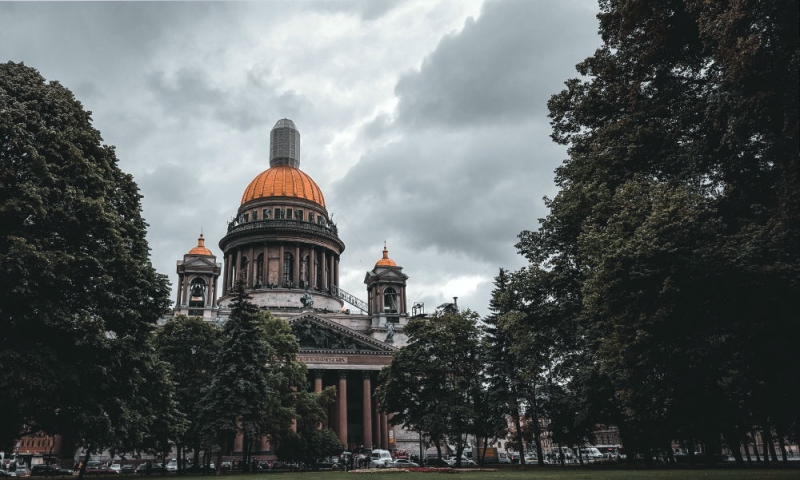
We go in search of treasures hidden in the labyrinths of streets and wells of courtyards, to places that you will not find in classic guidebooks. In this article we will show the underside of the city on the Neva: fourteen unusual places and one more that cannot be talked about. Those who are hardy can walk the route, in which case it will take the whole day. And public transport, scooters and bicycles will help reduce travel time.
1. The oldest rock store in St. Petersburg
Ligovsky Prospekt, 47 (metro station Ploshchad Vosstaniya)
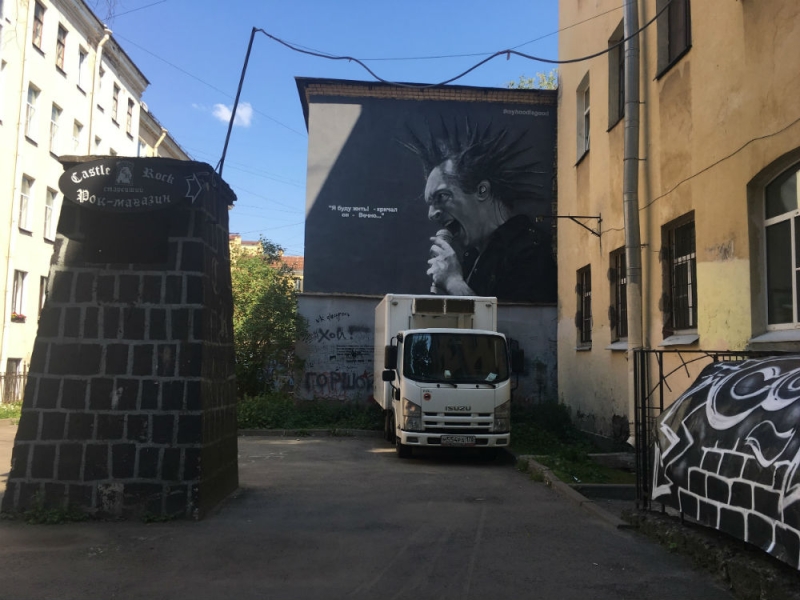
Photo: Vasilisa Tarunova
One of the moods of St. Petersburg is Russian rock. Therefore, it will be symbolic if the route begins at the legendary Castle Rock rock paraphernalia store, which has been operating opposite the Moskovsky Station for 19 years. Informal youth gathered here until the owner promised the locals peace and tranquility. Among the clients are Yuri Shevchuk, Boris Grebenshchikov, Sergei “Chizh” Chigrakov, Oleg Garkusha and other famous musicians. In addition to goods with appropriate rock paraphernalia, real artifacts are exhibited here: handprints, autographs, personal belongings of stars. For example, the cloak of Mikhail Gorshenev from the group “King and the Clown” and the concert costume of Ilya Chert from “Pilot”.
2. Apartment House Baka
Kirochnaya street, 24 (metro Chernyshevskaya)
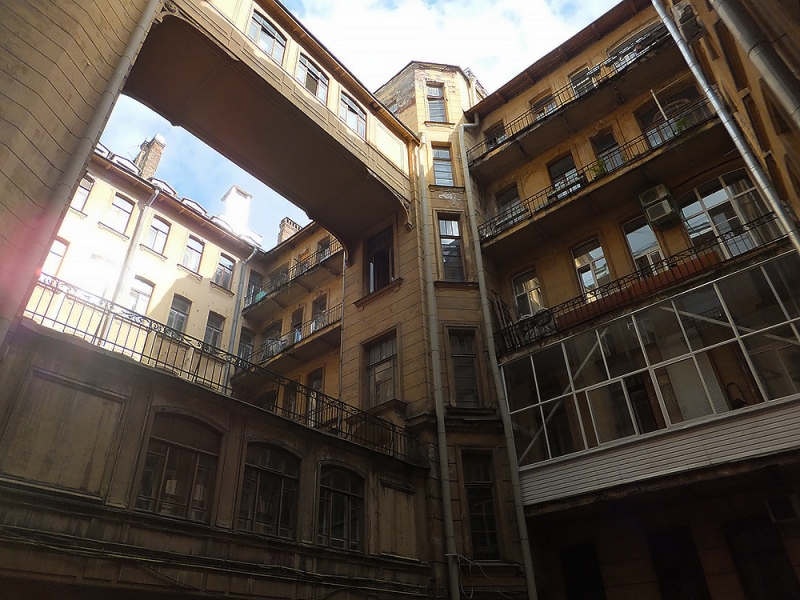
Photo: Vasilisa Tarunova
Not far from the pavilion of the Chernyshevskaya station there is an impressive house built in 1904-1905 for the publisher of the Rech newspaper Yulian Bak. This building has an “intricate” architecture, a richly decorated facade, open balconies, labyrinths of staircases and airy galleries that connect the wings to the main building on the second and fifth floors. Apartment numbering can drive even experienced couriers crazy. For example, after apartment No. 9, No. 34 suddenly appears. This is the result of numerous redevelopments of manor apartments into communal compartments, and then again into separate apartments. Enter the entrance on one street and try to exit on another.
3. The music store where the movie “Brother” was filmed
Kirochnaya street, 8 (metro Chernyshevskaya)
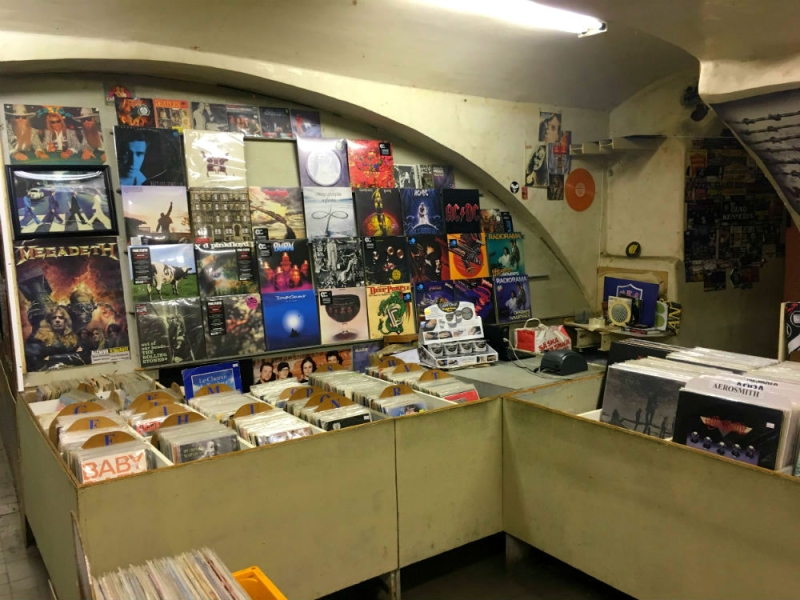
Photo: Vasilisa Tarunova
Incredibly, the music store where Danila Bagrov wanted to buy Nautilus still exists. In St. Petersburg, several addresses are attributed to him, but the filming took place in this courtyard on Kirochnaya. Go down the stairs, go to the record counter and ask: “Do you have the Wings of the Nautilus?.” And if the seller is in a good mood, he will answer you: “No, they sell it out very quickly. But you come again.”
4. Apartment house of three Benois
Kamennoostrovsky prospect, 26—28 (metro station Petrogradskaya)
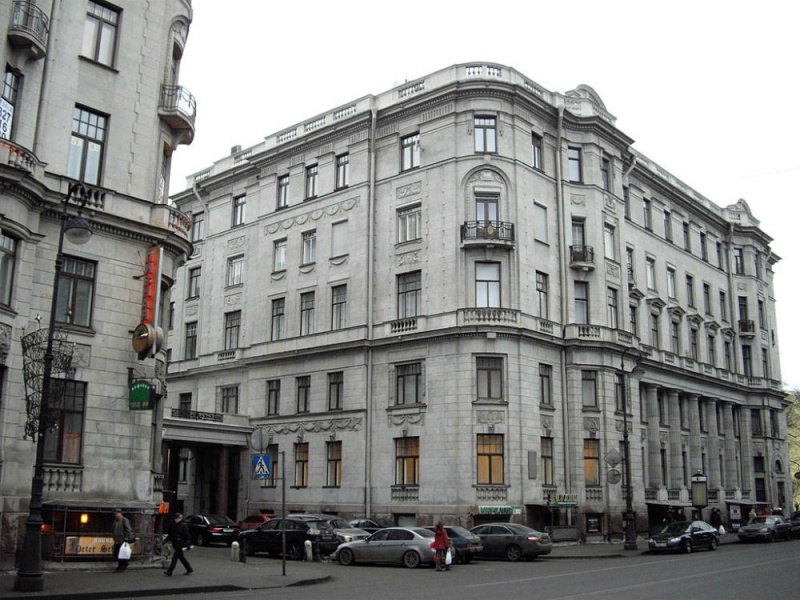
Photo: ru.wikipedia.org
One of the three most famous apartment buildings in the northern capital (together with the Tolstoy House and the Baka House), built according to the design of the Benoit brothers in 1912. The gigantic building can be called a metaphor for St. Petersburg: in one wing there are elite multi-room apartments, in the other there are classic communal apartments, and the third was destroyed by looters. Walk through the labyrinth of twelve well buildings that connect all the buildings of the giant complex. At the beginning of the 20th century, this building served as a model for the improvement of apartment buildings. It was equipped to the innovative standards of the time with built-in elevators, a steam heating system, its own power plant, laundry, incinerator, snow melter and even telephones. Famous party leaders, singers, artists and composers, for example, Dmitry Shostakovich, lived in the house.
5. Boiler house “Kamchatka” (club-museum of the “Kino” group)
Blokhina Street, 15 (Sportivnaya metro station)
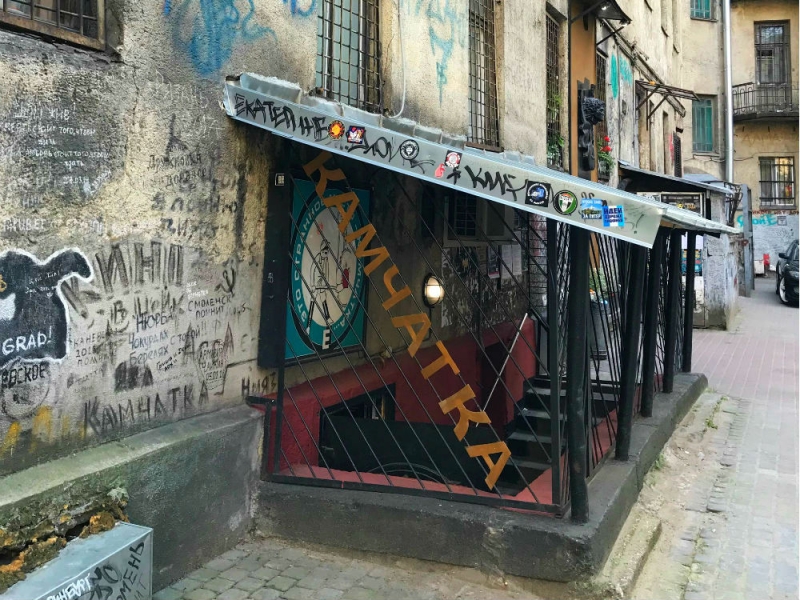
Photo: Vasilisa Tarunova
In Soviet times, you were not supposed to be a parasite. Composing poetry and songs was a thankless task, especially if the musician did not have any special education. So creative individuals were often recommended to find a normal job. Thus, the cult musician Viktor Tsoi decided to load coal in one of the boiler houses on the Petrograd side. The work is not difficult for a young man, and there is still time for concerts and writing. People called the legendary boiler house “Kamchatka”. Now there is a memorial courtyard and a working bar with an interactive museum. A great place to take a break from a long route and travel back in time 30 years ago, when young people were waiting for change.
6. The Spirit Court That Cannot Be Talked About
4 line v.o., 5 (entrance from Bolshoy Prospect in the first arch)
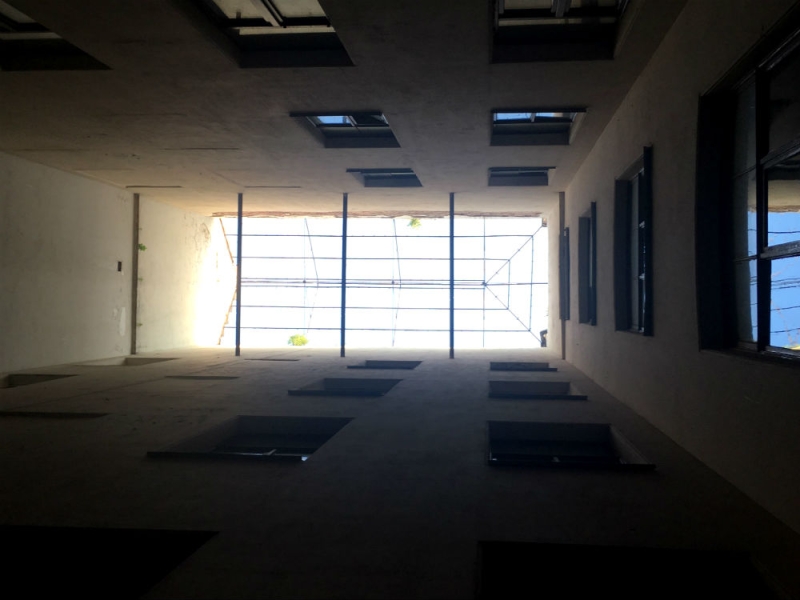
Photo: Vasilisa Tarunova
An urban legend says: you can’t tell anyone where this courtyard is. Only the chosen ones can find this place of power. They say that if you look at a piece of sky in the thick walls and make a wish, it will definitely come true. Perhaps it was not for nothing that the mystical artist Nicholas Roerich lived in this house at the beginning of the 20th century. Today, through the building, which has many underground galleries and through entrances, you can walk right through the entire block. Feel free to start conversations with the residents of the first floors; they willingly play along with random tourists and tell the legends of their house.
7. “Gryphon Tower” and the alchemist’s laboratory
7th line v.o., 16 (metro station Vasileostrovskaya)
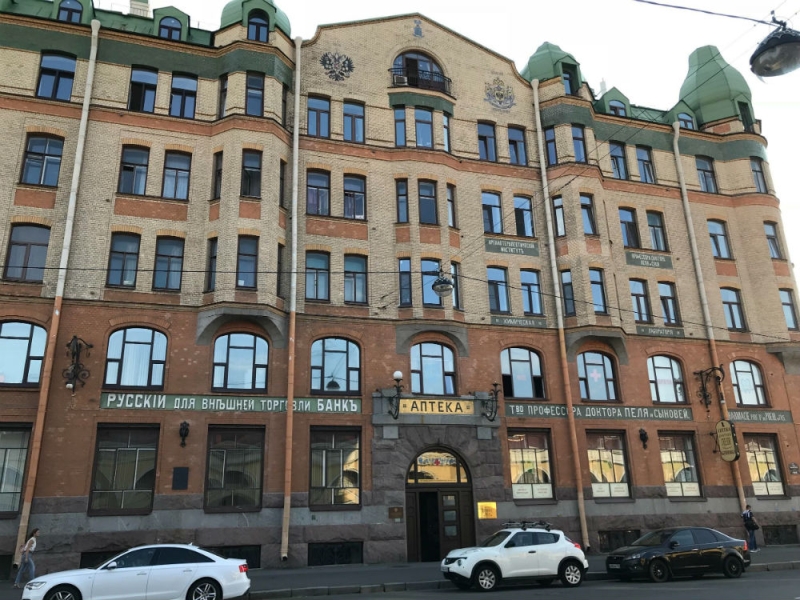
Photo: Vasilisa Tarunova
Take a look at the three-hundred-year-old Wilhelm Pehl’s pharmacy, which occupies building 16-18 on the 7th line vo. Inside there is a colorful pharmacy museum. And in the yard there is an unusual chimney – the hood of a chemical laboratory. The resemblance to a castle tower is fertile ground for urban legends. They say that griffins still live in the tower, who previously guarded the secrets of the old pharmacist Pel, and now occasionally fly over the city on the full moon. Although local residents are much more worried about monster hunters who sit in the yard all night long. According to legend, Wilhelm Poehl studied alchemy in the laboratory and worked on a formula for converting mercury into gold. And if you believe the rumors, he succeeded in his business. They also say that the tower changes the fate of people living nearby. There are also modern traditions. Someone is constantly drawing numbers on the bricks. They are needed so that time travelers can easily determine the coordinates of the desired world. In fact, this is an echo of the performance of the artist, who numbered each brick in the 1990s. So the pipe even received a second name – “Digital Tower”.
8. Vaska’s Dragon Court
Between Bolshoy Prospekt, 7th and 8th lines vo.
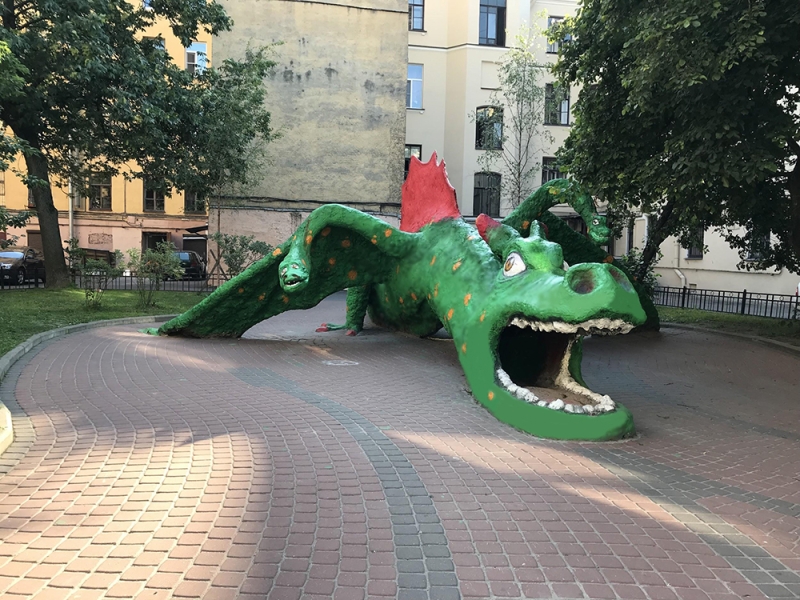
Photo: Vasilisa Tarunova
St. Petersburg residents sincerely love this concrete dragon and affectionately call him Vaska. Previously, there was a through passage inside the sculpture: the entrance was through the head, and the exit was on the other side of the animal. And today it was closed because some citizens left garbage and dirt inside. The dragon Vaska was created by a sculptor who lived in this house.
9. Courtyard of the Faculty of Philology of St. Petersburg State University
Universitetskaya embankment, 11 (metro Vasileostrovskaya)
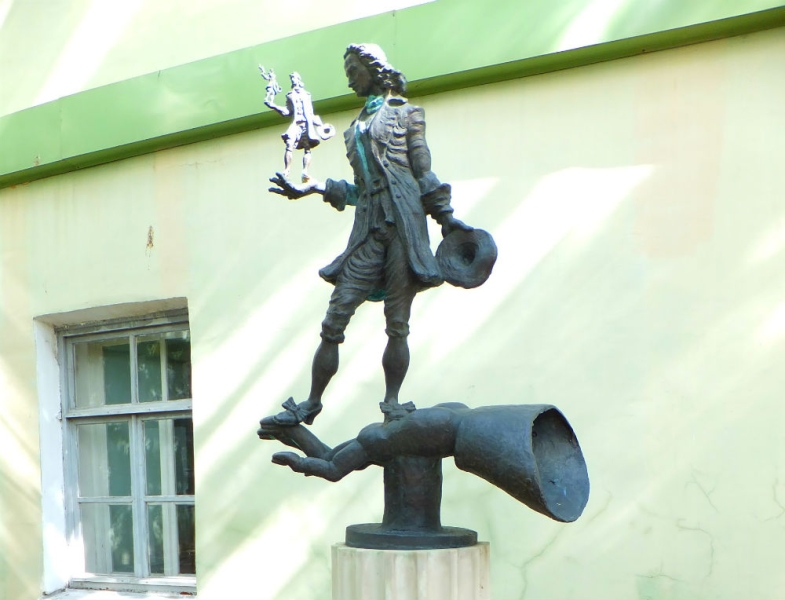
Photo: Vasilisa Tarunova
This courtyard hides a modern sculpture park that you can’t just get into. Entry is only possible with a student or pass, which will be issued to you if you show your passport at the entrance. A fabulous “small country” is hidden on the territory of the university. Writers, literary characters and simply mythical and magical creatures live here: a unicorn, the Little Prince, Gulliver, a hippopotamus and dozens of other, sometimes abstract figures. And the student’s sign for good luck is to touch the print of three palms.
10. Major Kovalev’s nose
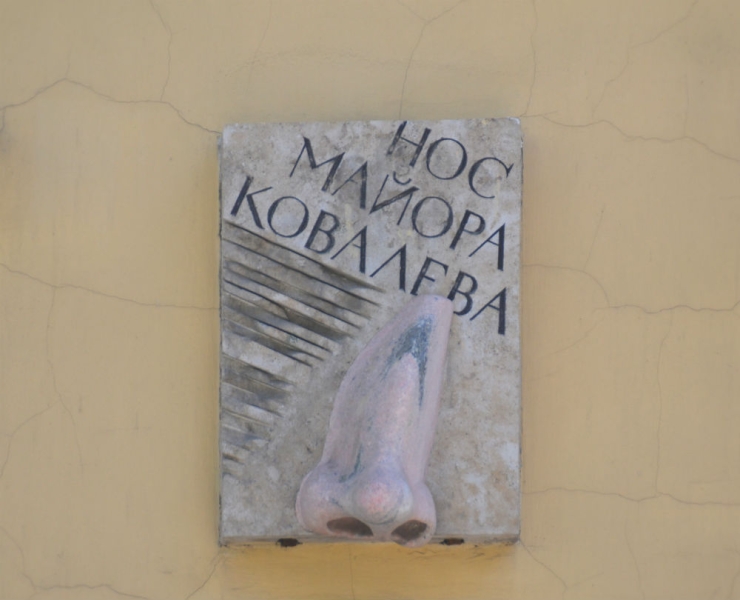
Photo: AVShumm/wikimapia.org
Voznesensky Prospekt, 36 (metro station Sadovaya)
The fact that a nose in St. Petersburg can begin to live a separate life is a well-known story. So much so that Gogol’s character has his own monument on the wall of a house on Voznesensky Prospekt. According to tradition, the Nose was stolen a couple of times for scrap metal. And local residents said that they met him at that time walking along Nevsky Prospekt.
11. House-iron
River embankment Fontanka, 199 and Sadovaya street, 128 (metro station Sadovaya)

Photo: Evgeny Prokofyev/Shutterstock.com
Iron houses are not uncommon in St. Petersburg. However, this one is interesting for its location. If you stand strictly opposite the end part, the width of which is no more than one window, it will seem that the house is completely flat. It’s an illusion. The building was built in 1912 for Mrs. V.G. Kudryavtseva. Initially, the architect conceived a rich façade, but the customer reduced the estimates, demanding strict economy. After all, the house is profitable, I didn’t build it for myself.
12. House-ring and courtyard of wishes
River embankment Fontanka, 92 (metro station Pushkinskaya)
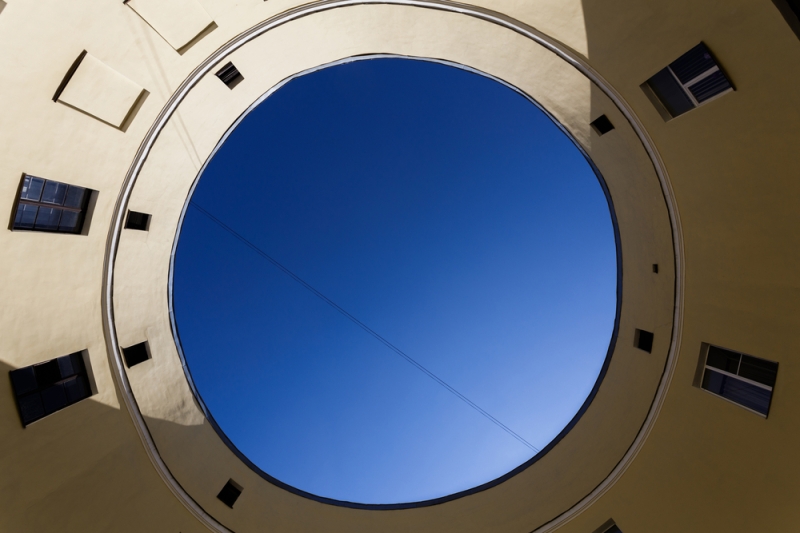
Photo: Andrey Orekhov/Shutterstock.com
Petersburgers love to dream. How else can you explain that there are so many mystical sources of power in the city? So in this courtyard there is a sign: stand in the middle, look into the celestial circle through the gap and make your cherished wish. It is interesting that sunlight enters all the windows not only of this house, but also of neighboring buildings. Thanks to its round shape, it does not cast shadows or obscure other facades. Today the house, built in 1820, is occupied, which is not surprising – all the rooms in it are walk-through, and this is not very convenient. Although such cramped conditions did not interfere with A.S.’s mother and older sister. Pushkin to live here for seven whole years.
13. Rotunda is a portal to other worlds
Gorokhovaya street, 57a and Embankment r. Fontanka, 81 (m. Sadovaya)
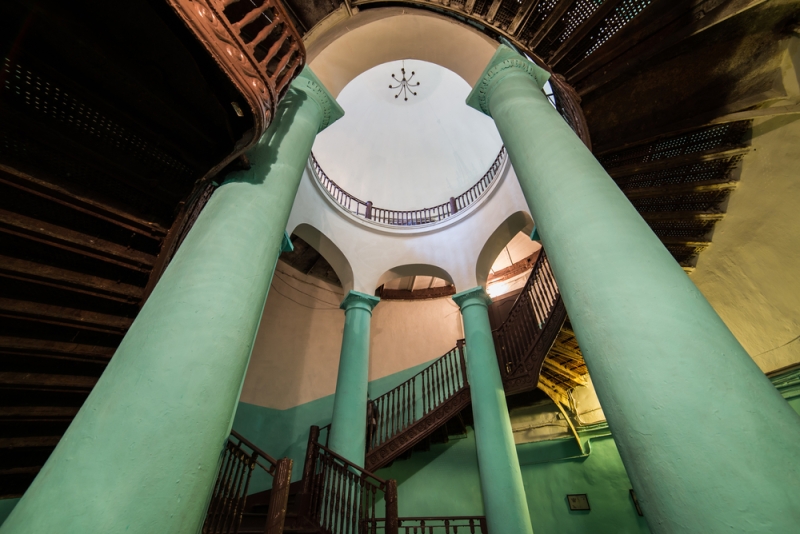
Photo: Myskina6/Shutterstock.com
Perhaps this is the most mystical place in St. Petersburg. Inside a building typical of the Northern capital of the 18th century in the style of classicism, there is suddenly a gazebo with high columns and stairs curving around it. For decades, such a strange structure has been surrounded by legends. Someone calls the Rotunda the center of the universe, since the diagonals of the city converge under it. Others say that Freemasons gathered here, Rasputin visited, and at midnight you can accidentally meet Satan. There are rumors that in the basement under the Rotunda there is an entrance to a parallel world. Even here in the last decades of the 20th century, noisy concerts of punks and rockers were held. It’s interesting that the communal apartments on the floors are still residential. And the tenants even agreed to organize a museum of the same name in the front door. Tourists leave voluntary donations, which are used to repair the entrance.
14. A huge courtyard with characters from the Emerald City
Pravdy Street, 6a (metro Vladimirskaya)
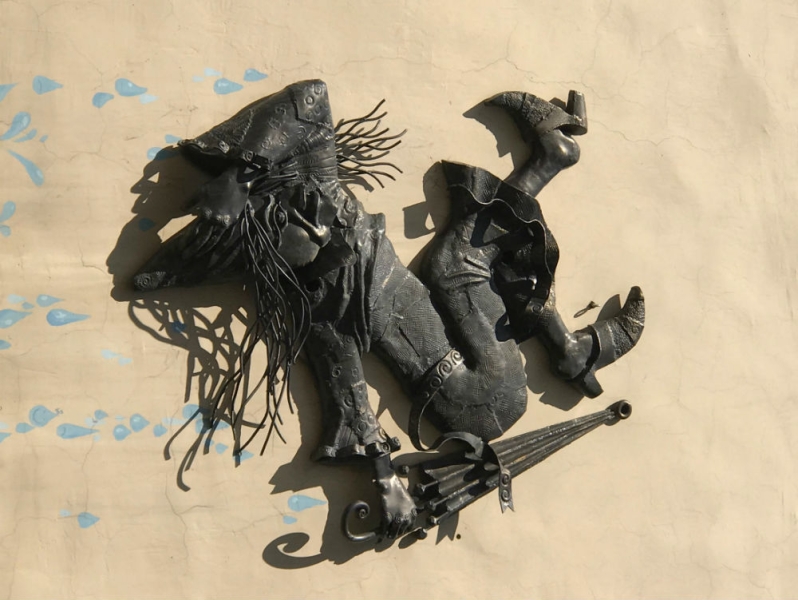
Photo: Vasilisa Tarunova
This is one of the largest through courtyards in St. Petersburg, in which the Emerald City is hidden. Walk through it for a few blocks. Be careful, because despite the fact that there is a yellow brick road, it is easy to get lost in this maze. But on the way you will meet the Scarecrow, the Tin Woodman, the Lion and Toto. The fairy-tale world appeared here in 2007 as part of a program for improving city courtyards.
15. Pedestal of an equestrian sculpture on Anichkov Bridge
Anichkov Bridge and Nevsky Prospekt, 54/3
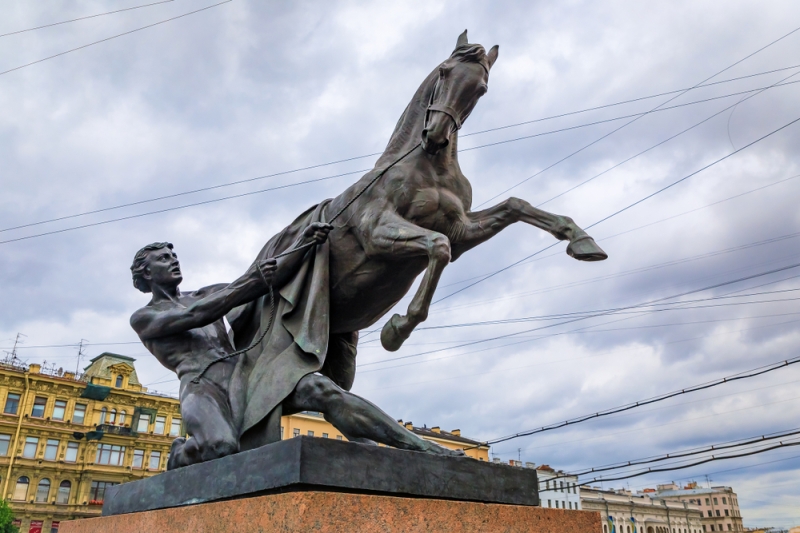
Photo: SvetlanaSF/Shutterstock.com
The Second World War left terrible scars on the body of St. Petersburg. Walking along the Anichkov Bridge, tourists admire Klodt’s equestrian sculptures. And they do not pay attention to the fact that on one of the pedestals there were deep chips from the shells that fell on the city on terrible winter days. Just as they don’t notice in the modern bustle the ancient loudspeaker on the wall of one of the houses nearby, which during the years of the siege conveyed news from the front to Leningraders and warned of danger. At the end of a long mystical journey through the space and time of the Northern capital, before you dive into the hustle and bustle of the 21st century, pause for a moment near these monuments.
And if, after reading this article, you still haven’t been able to decide on the direction of your future vacation or weekend trip, the “Where to Go” project will definitely help you. Just select your departure city and the month you are planning your trip.
We will create for you a list of destinations where you can go from your city, with the opportunity to buy tickets for one of three types of transport (plane, train or bus) and show you:
- ticket prices for all types of transport by which you can get to the place: planes, trains and buses;
- weather in the selected month;
- description of interesting locations and tips for visiting;
- up-to-date information about restrictions for vacationers and rules for entry into countries with which air traffic has been restored.
Preview photo: Jason Pan/Unsplash.com

